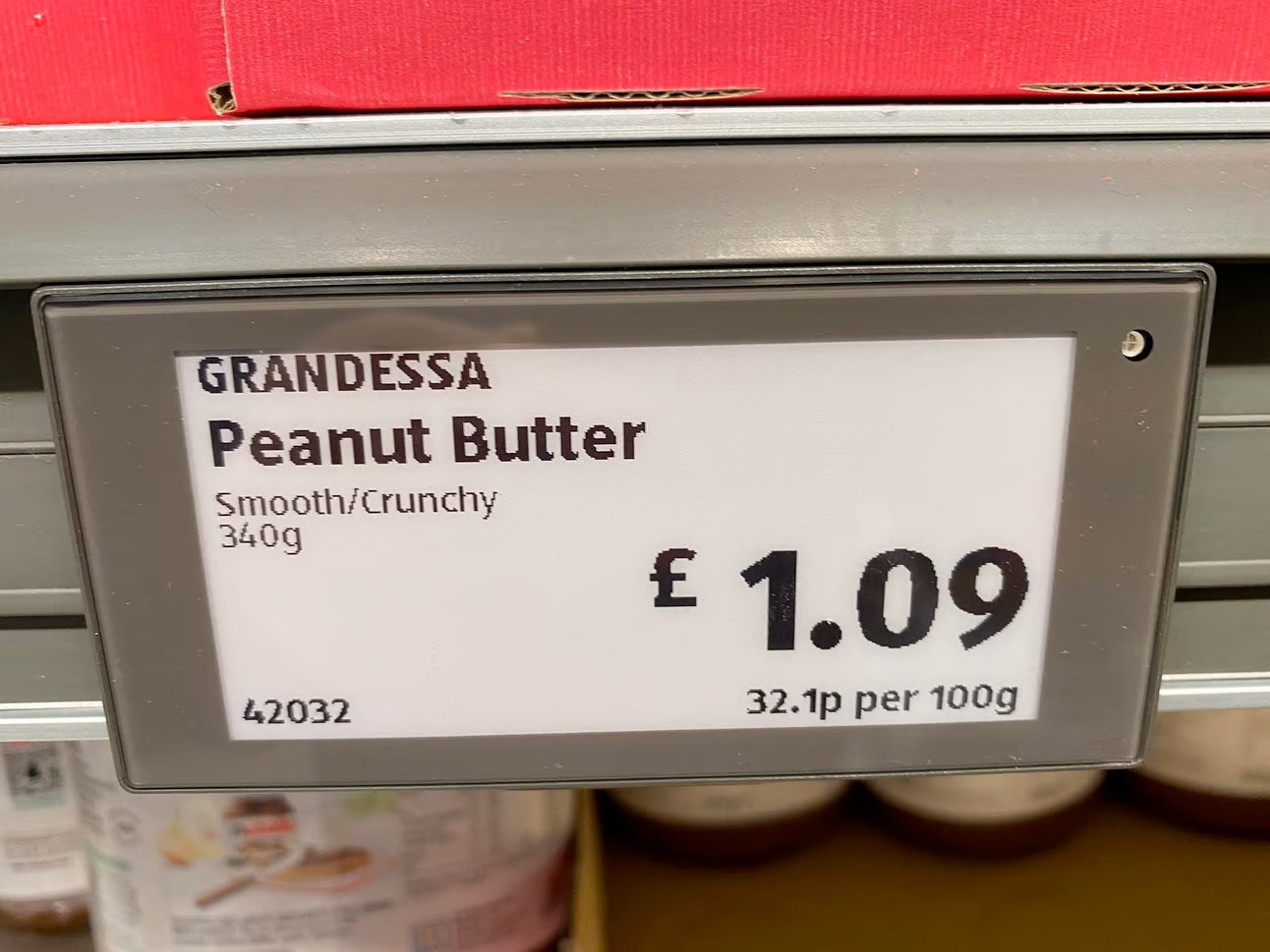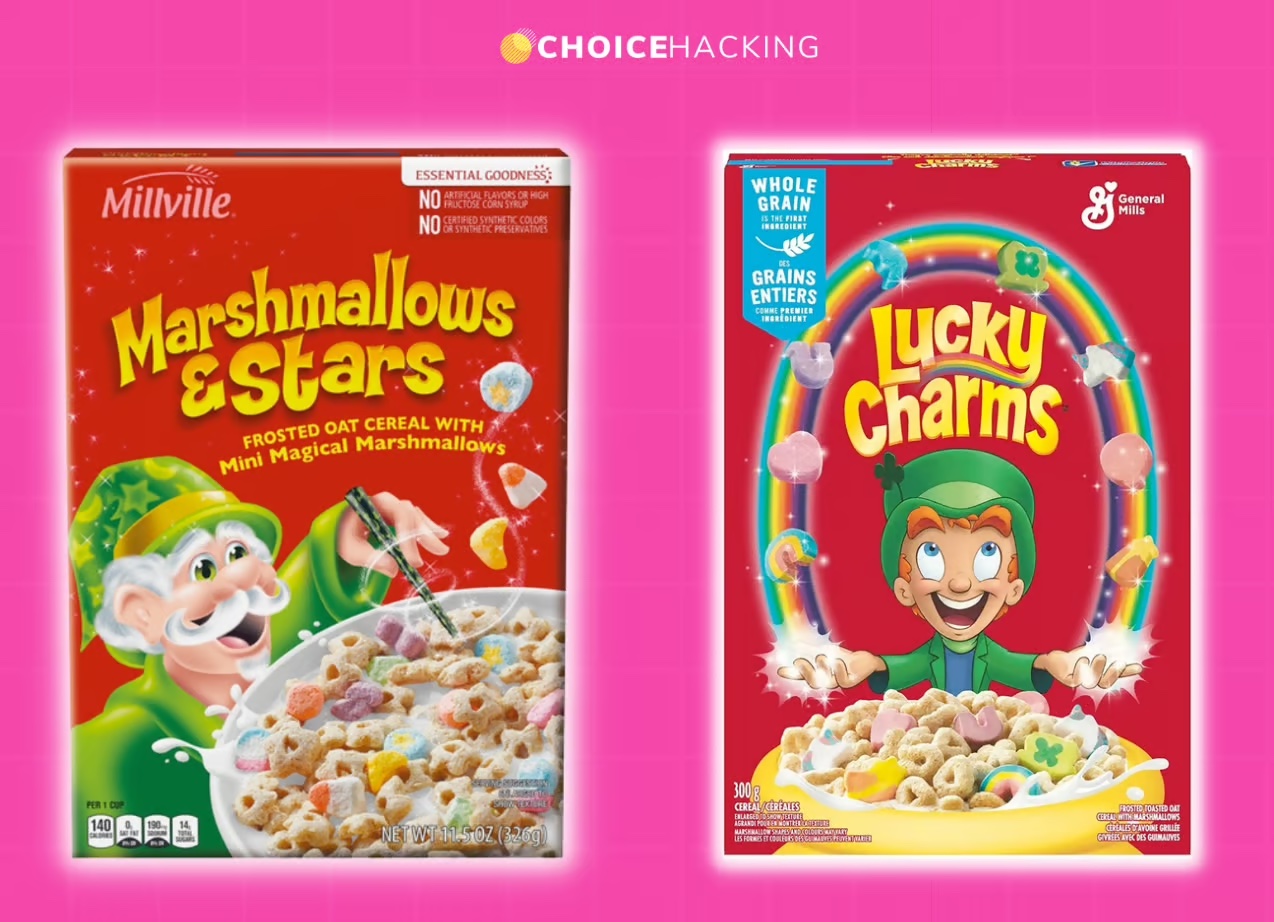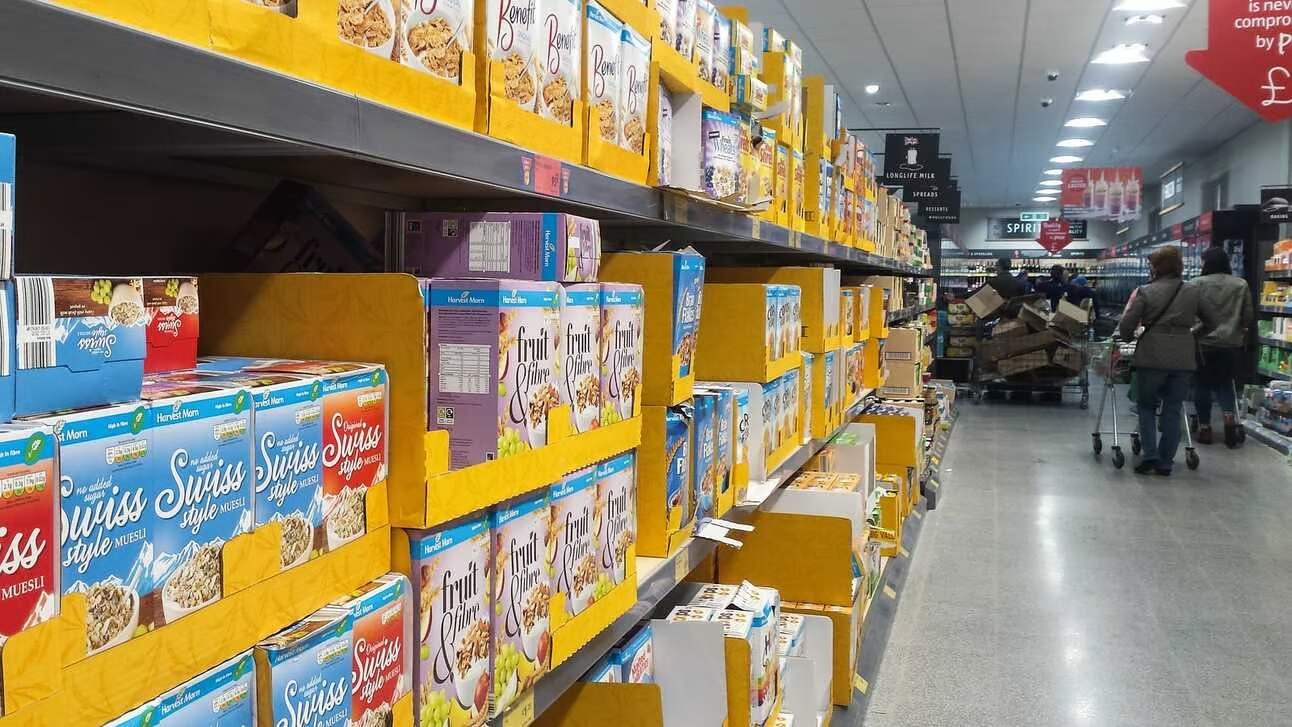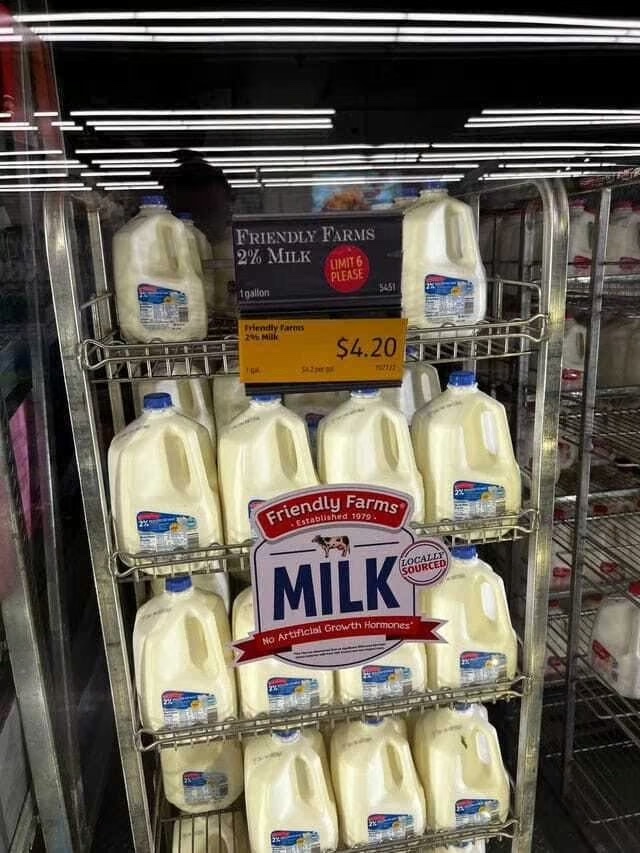Aldi — a “limited assortment” discount grocer with a cult following — is the fastest-growing grocer in both the US and the UK.
The brand currently has more than 2,200 locations in the United States and is growing by 100 stores a year, nudging ever closer to rivals like Walmart, Costco, and Kroger.
But even if you’ve never shopped at an Aldi, you've likely heard of its quirky customer experience:
Bare bones shelves filled with cardboard cases of generic products
Owned brands that seem just a little too familiar (a delicious can of Red Bull… I mean Red Thunder, anyone?)
Cashiers that scan products faster than The Flash
While some brands might not survive such a… unique store experience, Aldi is thriving due to its rock-bottom prices.
And its quirks just seem to make customers love it more.
But how did this German discount supermarket come out of seemingly nowhere to take over the world?
It’s down to a bit of psychology and behavioral science, of course — applied knowingly, or not, to Aldi’s customer experience…
Prefer to watch this case study?
Aldi’s reason to exist is savings — they want to provide the cheapest groceries possible without compromising on quality.
What’s fascinating is that this focus on cost-cutting has lots of positive effects on its store experience as well:
1. How Aldi Uses Simplicity to Sell
The most impactful psychological strategies Aldi uses (and the ones that save them the most money) are the Simplicity Theory and the management of choice.
✅ The Simplicity Theory says that customers prefer simple experiences.
In fact, the Simplicity Index, created by consultancy Siegel+Gale, found that a stock portfolio made up of the simplest publicly traded brands outperformed the market by 686%.
🧠 The prices you see are the prices you get
Aldi doesn’t do reward cards, loyalty programs, or offer coupons.
Not only does this make Aldi a simpler experience for customers, but it also helps trim Aldi’s marketing and staffing costs.
Customers never feel like they’re playing a savings game with the store, clogging up Aldi’s tiny aisles while they figure out how to save $1 on dish soap.
It also makes customers feel like they’re getting the best price Aldi can offer on a product, building long-term trust in the brand.
🧠 Aldi doesn’t let big brands fight over shelf space at the expense of the customer experience
Like cousin brand Trader Joes, Aldi sells almost exclusively store brands.
Although these are distributed under the Aldi name, most are manufactured by the same well-known brands that Aldi appears to be ripping off.
This allows Aldi to better control costs in manufacturing and marketing, as well as giving a little wink and a nudge to customers who, in 2023, have figured out that most generic brands are made in the same factories as the more well-known brands.
🧠 Aldi’s bare-bones store experience means customers have less information to process
The Aldi store experience could be described as “minimalistic”:
Shelves are filled with cardboard boxes full of product
There aren’t any fancy end-aisle displays with the latest deals
There are limited product options and quantities stocked
This might make the store experience feel bare to some people.
But there are good business (and psychology) reasons for this approach.
A dead-simple customer experience is not only cheaper and easier for Aldi to maintain (therefore requiring fewer workers), but it also means customers are dealing with a lighter cognitive load.
That makes shopping easier, faster, and less stressful.
🧠 Cognitive Load describes how much information we’re trying to take in, process, or remember at one time.
When our brains are overtaxed, we tend to feel stressed and make less-than-optimal choices (like impulse buying that chocolate cake after a hard day).
But when we are making decisions with just the right amount of information and stimulus — as we are in Aldi’s streamlined experience — shopping feels less psychologically stressful.
And that’s particularly important for Aldi’s core customers.
They are already dealing with a stressed and overtaxed brain due to the everyday financial strain and trade-offs they’re constantly making to survive.
2. How Aldi Makes It Easier to Choose
For a grocery store with a comparatively tiny footprint, Aldi outsells almost all other grocery stores per square foot in the United States.
In fact, it makes $662 of revenue per square foot — that’s more than Walmart ($418) and Dollar General ($223) combined.
But why does limiting the number of products in their stores actually increase Aldi’s sales?
It’s down to a behavioral science principle known as Choice Overload.
🧠 What is the Choice Overload Effect?
Choice Overload describes the human tendency to be attracted by just enough choice but then become mentally overloaded if we see too many options.
Too much choice can cause anxiety, disappointment, and even depression.
🧠 How Aldi Reduces Choice Overload
Reducing costs for Aldi corporate often translates to reducing choice.
And consciously or not, that limitation of choice can have a positive effect on sales:
Aldi has fewer items overall: According to the Food Industry Association, Aldi only has 1650 SKUs compared to the more than 30k items in a typical American grocery store.
Fewer options for each item: While a traditional grocery aisle in a Walmart could have nearly 300 salad dressing options, Aldi US will only have less than 20 (Aldi in the UK carries far fewer — 4 at last count).
3. How Aldi uses psychology to make products feel like they’re in demand
Aldi uses milk as what is called a “loss leader” in its stores.
That means Aldi doesn’t make any money on milk but instead loses money in exchange for driving customers into the store.
They know that almost everyone needs milk, and if they make theirs the cheapest in town, they can get more people to shop in Aldi.
But how they use a combination of Anchoring and Scarcity is incredibly smart (even if it wasn’t their intended purpose).
Notice the red sticker in the image below that reads “Limit 6 Please.”
This sign gets people thinking about scarcity.
They think, “Why is it limited? I only needed one gallon of milk, but I wonder if that means Aldi is running low. I’d better get two, just in case.”
This sign also anchors customers to the number “6.”
Most people wouldn’t know what to do with 6 gallons of milk, but Anchoring Bias means that the presence of the number six could get them to consider buying more than one gallon of milk.
In reality, there are likely lots of reasons for Aldi to limit their milk sales.
But the effect of putting up the sign triggers peoples’ susceptibility to scarcity — whether that’s a conscious act on Aldi’s part or not.
If you want to apply these principles like Aldi has, ask yourself:
Simplicity Theory: Be honest with yourself. How pared down is your digital or physical customer experience? Are your marketing comms simple and to the point, or do they ramble with needless information?
Choice Overload: Are you using choice strategically? (Here’s a hint: most marketers think less is always more, but that’s not always true… more options can signal quality and help attract new buyers. But if there’s no way to parse down and compare these options, customers can get frustrated and overwhelmed.)
Scarcity: Do you communicate scarcity clearly to your customers? (Please avoid using false scarcity or scarcity with no reason why.)
Want to learn more about how your buyers tick (using marketing psychology, behavioral science, and predictive AI)?
👉 When you’re ready, Choice Hacking can help:
- Coaching: Looking for clarity, focus, and confidence in your marketing and/or career? Behavioral Science-powered 1-on-1 Coaching could be a good match for you.
- Courses & Skill Sessions: Improve your customer experience, customer journey maps, presentations, landing page conversion rate, and more with the power of applied behavioral science in a self-directed course.
- Training: We can help your team level up their work with psychology, behavioral science, and AI training.
- Consulting: Get professional insight to grow your business with projects like:




